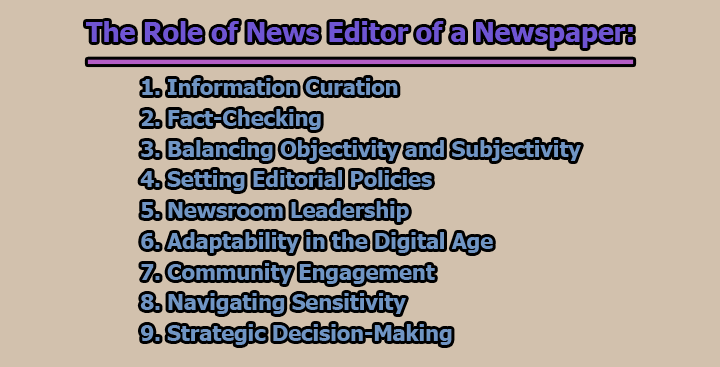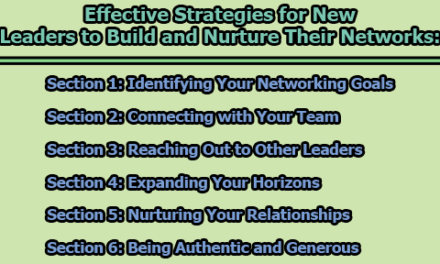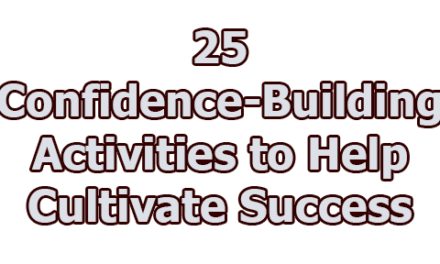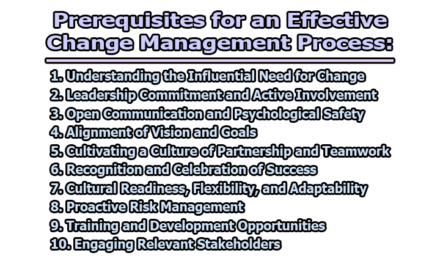The Role of News Editor of a Newspaper:
In the ever-evolving landscape of media, the role of a News Editor stands as a linchpin, crucial in shaping the narratives that define our understanding of the world. As the gatekeepers of information, News Editors play a pivotal role in ensuring that the stories that reach the public are not only accurate but also resonate with the values and interests of the diverse audiences they serve. In the rest of this article, we will explore the role of news editor of a newspaper.
1. Information Curation (Crafting the Narrative): At the core of the News Editor’s responsibilities lies the art of information curation. In an age inundated with an incessant flow of data, the News Editor assumes the role of a discerning curator, meticulously selecting, shaping, and presenting information to create a coherent and impactful narrative. This involves navigating through a vast sea of news stories, spanning global events to local issues, and choosing the most salient and relevant pieces that will resonate with the diverse readership.
The process begins with a keen understanding of the newspaper’s audience, demographics, and editorial stance. The News Editor must align the chosen stories with the values, interests, and expectations of the readership, ensuring that the narrative not only informs but also engages. This task demands a delicate balance between representing a comprehensive spectrum of news and tailoring content to suit the specific preferences and priorities of the audience.
Crafting a narrative involves more than just presenting facts; it requires storytelling finesse. News Editors work with journalists to structure stories in a compelling manner, creating a narrative arc that captures attention and sustains interest. This process often involves making decisions about story placement, headline selection, and the inclusion of multimedia elements to enhance the overall impact of the narrative.
Consequently, the News Editor serves as the architect of the newspaper’s storytelling landscape, shaping the narrative to reflect the ever-changing dynamics of the world. By curating information thoughtfully, the News Editor not only informs the public but also contributes to the formation of a collective understanding of the complex issues that shape our societies.
2. Fact-Checking (Upholding Journalistic Integrity): In the age of information overload and the rapid dissemination of news through various channels, the role of a News Editor as a guardian of journalistic integrity is more critical than ever. Rigorous fact-checking is the cornerstone of this responsibility, requiring meticulous attention to detail and a commitment to presenting accurate and verified information to the public.
Fact-checking involves a thorough examination of the sources, verification of claims, and confirmation of the authenticity of information before it is published. News Editors work closely with reporters and journalists to establish a culture of accuracy within the newsroom, emphasizing the importance of cross-referencing information, checking primary sources, and being vigilant against the spread of misinformation.
The News Editor’s commitment to upholding journalistic standards extends beyond the newsroom, influencing the newspaper’s reputation and credibility in the eyes of the public. In an era where misinformation can have far-reaching consequences, from shaping public opinion to influencing political landscapes, the News Editor’s dedication to rigorous fact-checking becomes a crucial bulwark against the erosion of trust in media institutions.
By ensuring that every piece of information disseminated through the newspaper is thoroughly vetted, the News Editor not only safeguards the integrity of the publication but also reaffirms the public’s reliance on the media as a trustworthy source of information.
3. Balancing Objectivity and Subjectivity (The Editorial Touch): While the journalistic principle of objectivity remains a guiding light, News Editors must also bring their editorial touch to the content. This delicate balancing act involves making decisions about which stories to prioritize, how to frame them, and the overall tone of the coverage. In doing so, News Editors contribute to the formation of a distinct editorial voice for the newspaper.
Objectivity is not synonymous with neutrality; it is about presenting information fairly, without undue bias. News Editors play a pivotal role in guiding journalists to approach stories with a critical and impartial lens. However, recognizing that complete neutrality is an ideal rather than a practical reality, News Editors embrace the editorial touch to lend a human perspective to news coverage.
The editorial touch involves making conscious decisions about the emphasis placed on certain aspects of a story, choosing the most appropriate language to convey the intended message, and determining the overall tone of the coverage. This process requires a deep understanding of the newspaper’s mission, values, and the expectations of its audience.
By injecting a degree of subjectivity into the editorial process, News Editors ensure that the newspaper’s coverage reflects a nuanced understanding of complex issues, resonating with readers on a more personal and emotive level. This editorial touch not only sets the publication apart but also establishes a connection between the newspaper and its audience, fostering engagement and loyalty.
4. Setting Editorial Policies (Navigating Ethical Waters): The News Editor serves as the architect of the ethical framework that guides the entire newsroom. Setting and enforcing editorial policies is a multifaceted responsibility that involves defining the standards for accuracy, fairness, and ethical conduct within the newspaper. These policies serve as a compass, ensuring that journalists adhere to a set of principles that safeguard the integrity of the publication.
One of the primary considerations in setting editorial policies is the commitment to accuracy. News Editors establish guidelines that mandate thorough fact-checking processes, requiring journalists to verify information from multiple sources before publication. This commitment to accuracy not only upholds journalistic standards but also protects the newspaper from the pitfalls of spreading misinformation.
Ethical considerations, such as the protection of sources and the avoidance of conflicts of interest, are also integral components of editorial policies. The News Editor must create a culture within the newsroom that prioritizes the responsible and ethical conduct of journalists. This involves providing clear guidance on issues such as the use of anonymous sources, disclosure of potential conflicts, and the handling of sensitive information.
Enforcing editorial policies requires consistent communication, training, and, when necessary, corrective action. The News Editor plays a crucial role in fostering a newsroom culture where ethical considerations are not just rules to follow but integral principles that guide every journalistic endeavor.
In navigating ethical waters, News Editors ensure that the newspaper not only reports the news but does so with a commitment to truth, transparency, and the highest standards of integrity.
5. Newsroom Leadership (Orchestrating a Symphony of Voices): Within the bustling confines of a newsroom, the News Editor assumes a leadership role, orchestrating a diverse ensemble of voices to create a harmonious and impactful publication. Effective newsroom leadership is a delicate dance that requires a combination of managerial skills, editorial vision, and a deep understanding of the strengths and capabilities of each team member.
Central to newsroom leadership is the ability to foster collaboration and teamwork. News Editors work closely with reporters, writers, photographers, graphic designers, and other staff members to bring stories to life. This collaborative effort is not just about producing individual pieces of content but creating a cohesive narrative that resonates with the publication’s audience.
Communication is a linchpin of effective newsroom leadership. News Editors must articulate a clear editorial vision, provide constructive feedback, and ensure that every team member understands their role within the larger context of the newspaper’s mission. Regular team meetings, brainstorming sessions, and open lines of communication foster an environment where creativity can flourish, and each team member feels valued and supported.
In addition to managing day-to-day operations, News Editors must also inspire and motivate their team. This involves recognizing and cultivating the unique talents of each team member, fostering a culture of continuous learning and improvement, and celebrating the successes, no matter how small, that contribute to the overall success of the newsroom.
Ultimately, newsroom leadership is about creating an environment where journalists can thrive, where creativity and innovation are encouraged, and where the collective efforts of the team result in a publication that not only informs but inspires and engages its audience. The News Editor, as the captain of this journalistic ship, guides the newsroom through the challenges and triumphs of the ever-evolving media landscape.
6. Adaptability in the Digital Age (Embracing Technological Advances): In the fast-paced digital age, the News Editor must be a tech-savvy navigator, steering the newspaper through the turbulent waters of technological change. Embracing and leveraging technological advances is crucial for staying relevant and reaching wider audiences in an era dominated by online platforms and social media.
News Editors need to stay abreast of emerging technologies that can enhance news coverage, distribution, and audience engagement. From social media analytics to data visualization tools, understanding and incorporating these technologies into the editorial process can amplify the impact of news stories. Moreover, a strong online presence, including a well-designed website and strategic use of social media platforms, is essential for reaching the digital-savvy audience and expanding the newspaper’s influence.
The adaptability of News Editors extends beyond the integration of new tools; it involves cultivating a mindset that embraces change. Whether it’s adopting new digital platforms or experimenting with innovative storytelling formats, the News Editor must lead the newsroom in adapting to the evolving landscape, ensuring that the newspaper remains a dynamic and influential force in the digital age.
7. Community Engagement (Building a Relationship of Trust): A newspaper is not just a source of information; it is a vital part of the community it serves. News Editors play a pivotal role in building and maintaining a relationship of trust with their readership through effective community engagement strategies. This involves actively listening to the concerns and interests of the community and incorporating that feedback into editorial decision-making.
Engagement can take various forms, from hosting town hall meetings and forums to participating in community events. News Editors must encourage journalists to establish connections with local residents, community leaders, and organizations to gain insights into the issues that matter most to the community. By actively participating in the community, the newspaper becomes not only a source of news but a platform that reflects and represents the diverse voices within its readership.
Community engagement is a two-way street. It’s not just about delivering news to the community but also about empowering the community to contribute to the news-making process. This can be achieved through letters to the editor, guest columns, and other interactive features that invite readers to share their perspectives and experiences. By fostering this reciprocal relationship, News Editors ensure that the newspaper remains a trusted and integral part of the community it serves.
8. Navigating Sensitivity (Addressing Controversies and Sensitive Topics): In the realm of journalism, News Editors often find themselves navigating through turbulent waters of controversies and sensitive topics. The ability to address such issues with finesse and responsibility is a crucial aspect of their role. Whether it’s a high-profile scandal, a humanitarian crisis, or a divisive political issue, News Editors must make decisions that balance the public’s right to know with the potential impact on individuals or communities involved.
Sensitivity in reporting involves considering the ethical implications of a story, understanding the potential harm it may cause, and making informed decisions about the level of detail and tone of the coverage. News Editors guide their team in approaching sensitive topics with empathy, ensuring that the human aspect of the story is not overshadowed by sensationalism.
Moreover, News Editors must be prepared to handle the fallout from controversial stories. This includes responding to reader feedback, addressing concerns, and, when necessary, issuing corrections or clarifications. Navigating sensitivity requires a delicate touch, a commitment to fairness, and a recognition of the broader ethical responsibilities that come with the power of shaping public perception.
9. Strategic Decision-Making (Adapting to Market Trends): The media landscape is constantly evolving, with shifting market dynamics and emerging trends shaping the way news is consumed. News Editors must be strategic decision-makers, steering the newspaper through these changes to ensure its long-term sustainability and relevance.
Understanding market trends involves staying informed about changes in reader behavior, emerging technologies, and shifts in advertising and revenue models. News Editors must make informed decisions about the allocation of resources, the introduction of new content formats, and the exploration of additional revenue streams.
Strategic decision-making also extends to the positioning of the newspaper within the market. News Editors must assess the competitive landscape, identify niche opportunities, and make choices that align with the publication’s mission and goals. Whether it’s expanding into new topic areas, launching special features, or collaborating with other media outlets, strategic decisions shape the trajectory of the newspaper in a dynamic and competitive media environment.
In conclusion, the role of a News Editor is a complex and multifaceted one, requiring a unique blend of skills, knowledge, and intuition. From information curation to community engagement, the News Editor is the beacon of truth, guiding the newsroom through the ever-changing currents of the media landscape. As the guardians of journalistic integrity, News Editors hold the power to shape public perception, influence societal discourse, and ultimately contribute to the formation of an informed and engaged citizenry. In a world inundated with information, the role of the News Editor remains indispensable, ensuring that the stories we read are not just headlines but windows into the complex and nuanced tapestry of our shared reality.

Library Lecturer at Nurul Amin Degree College










